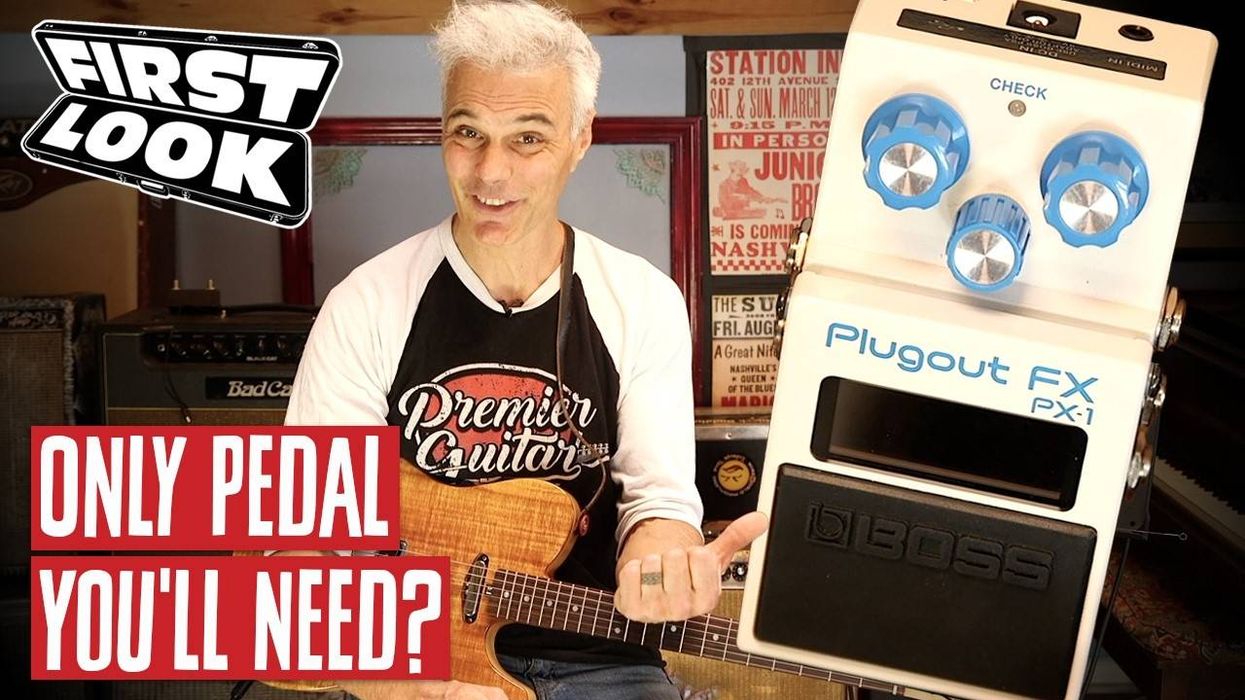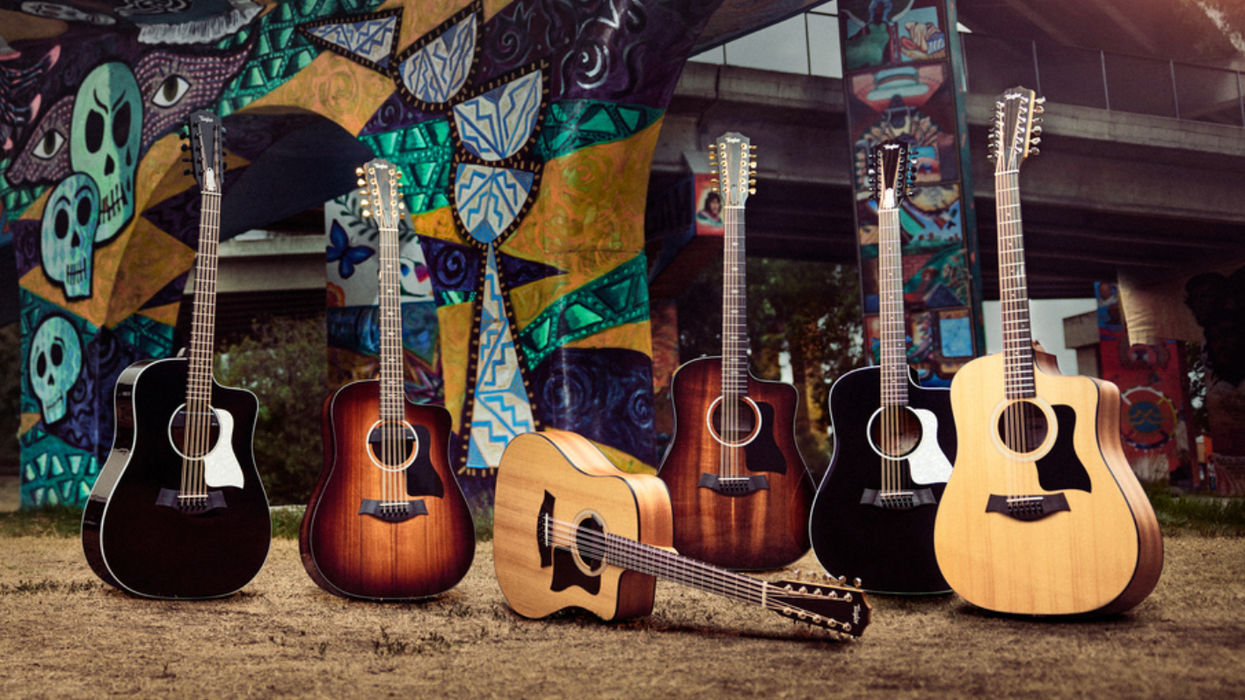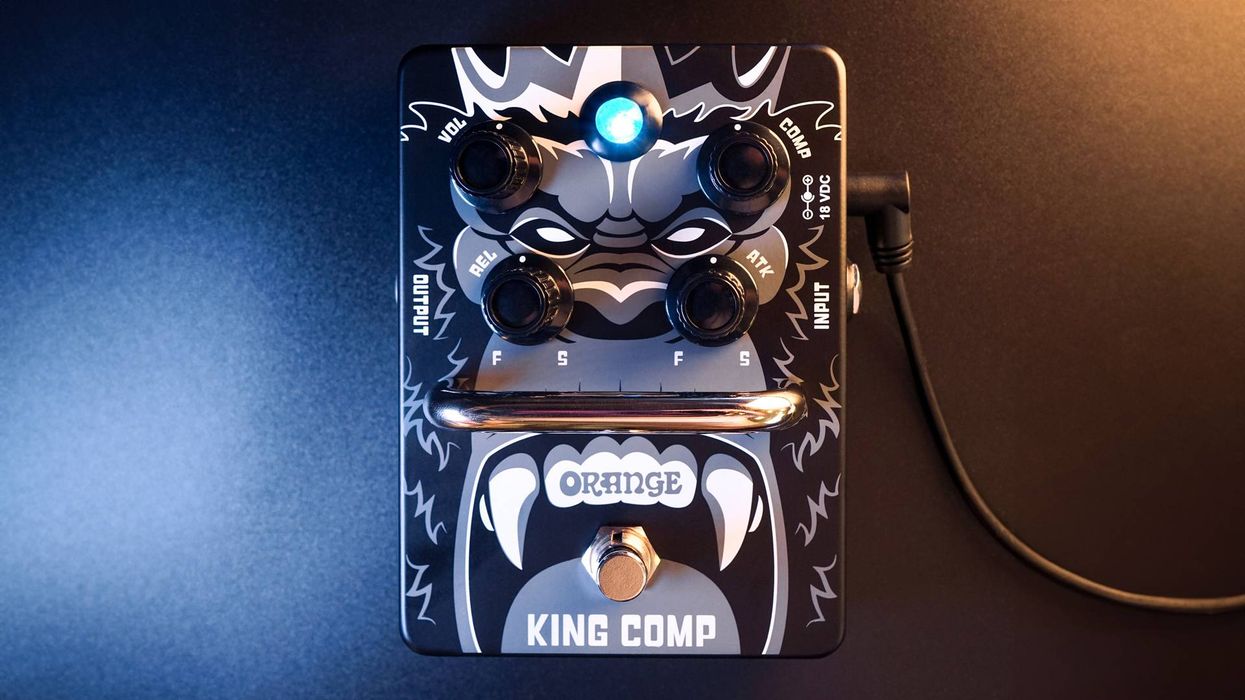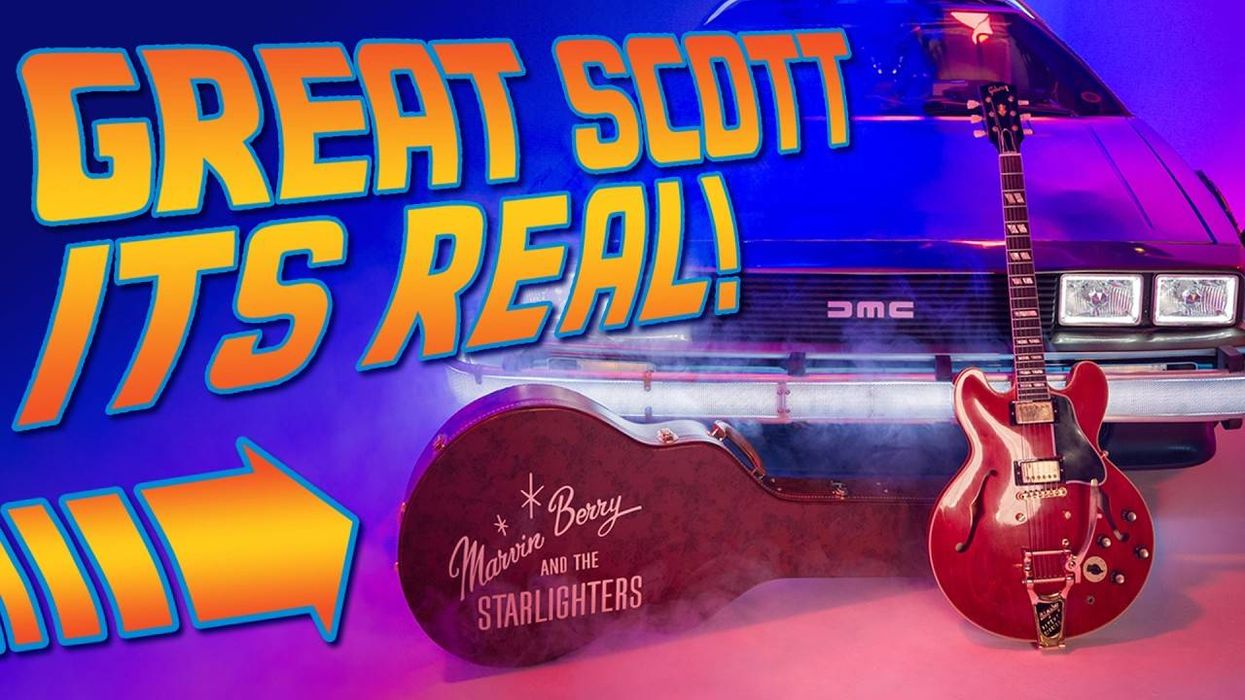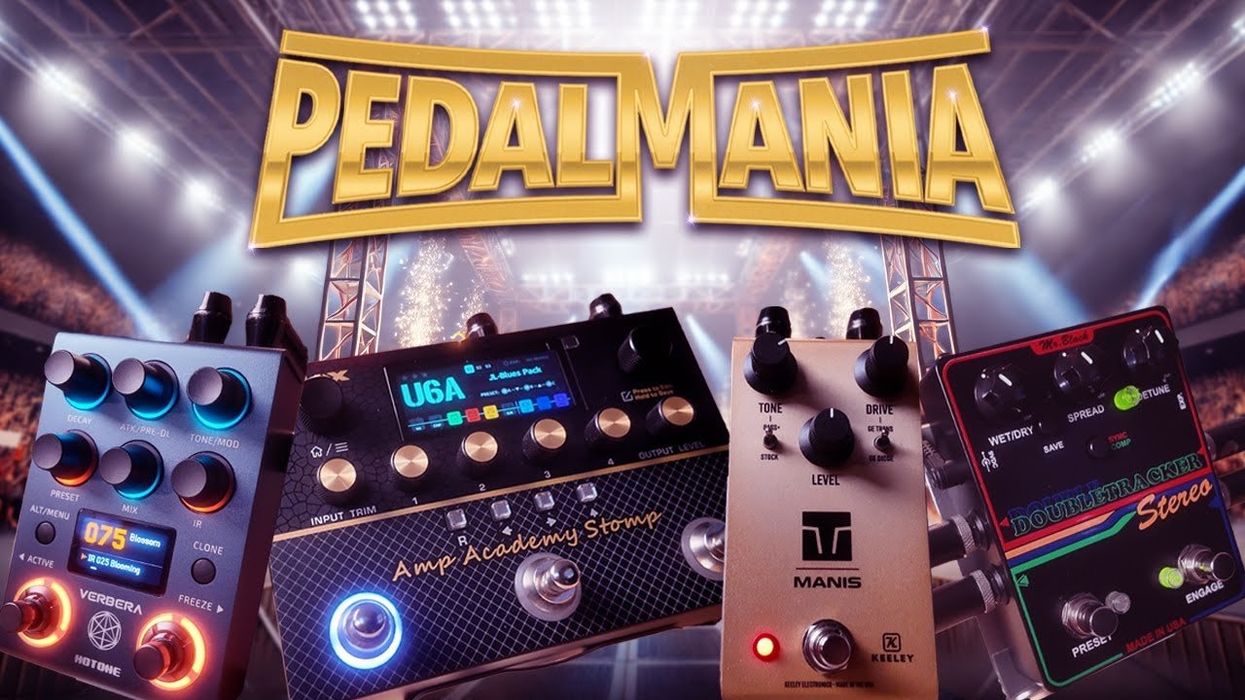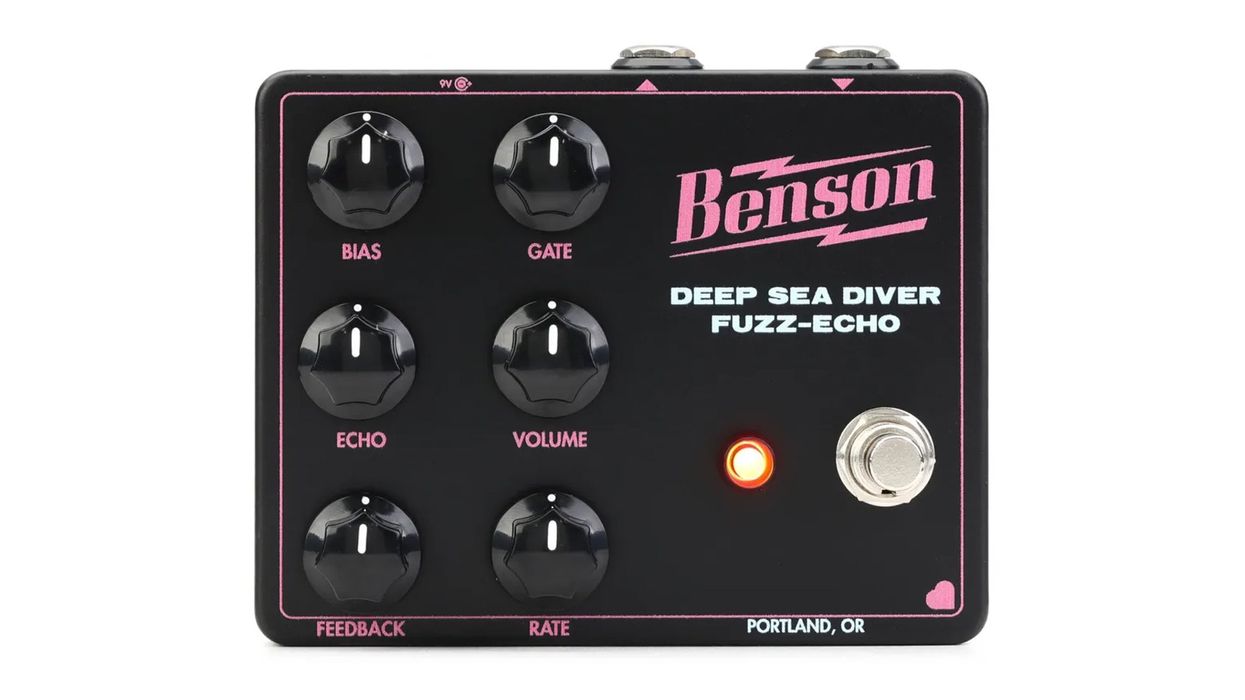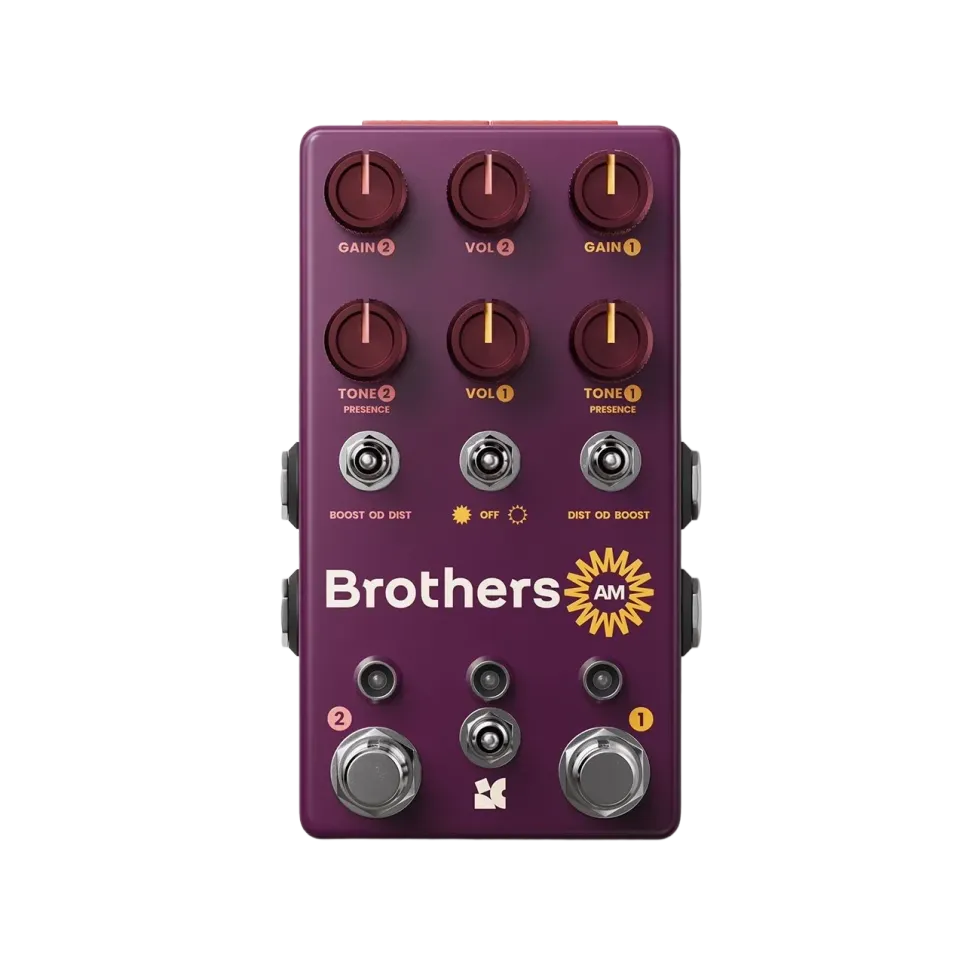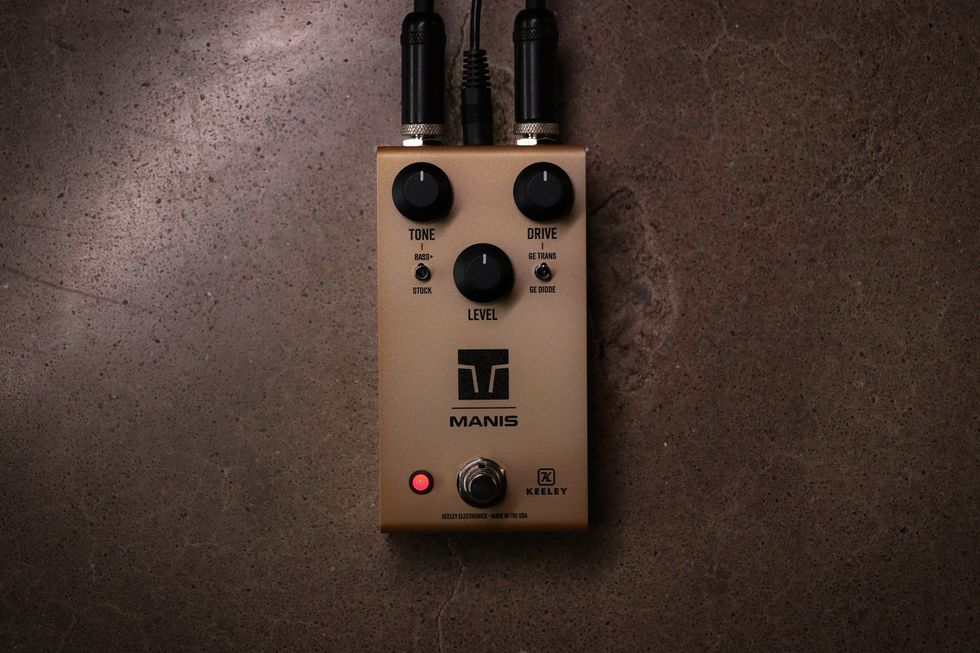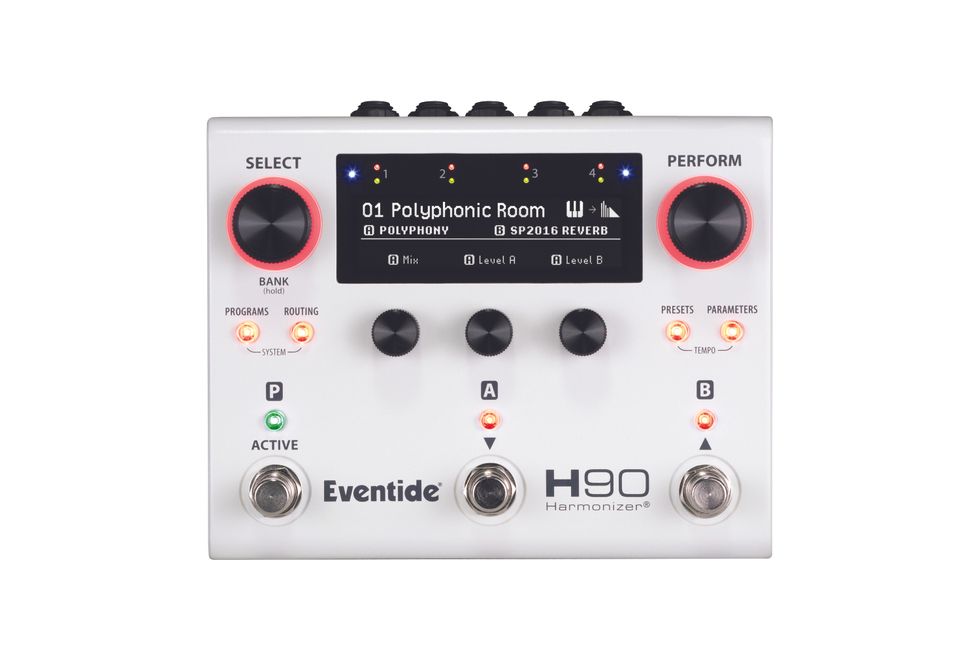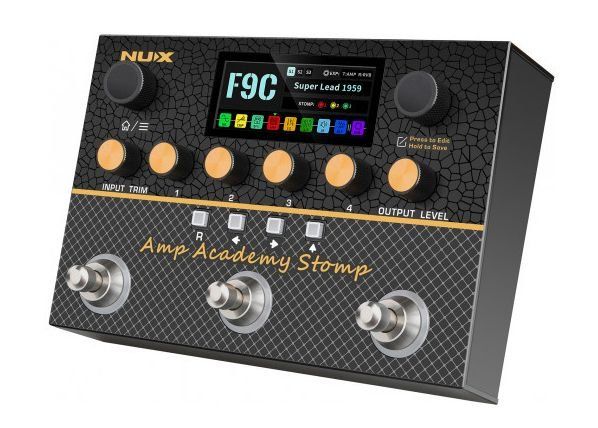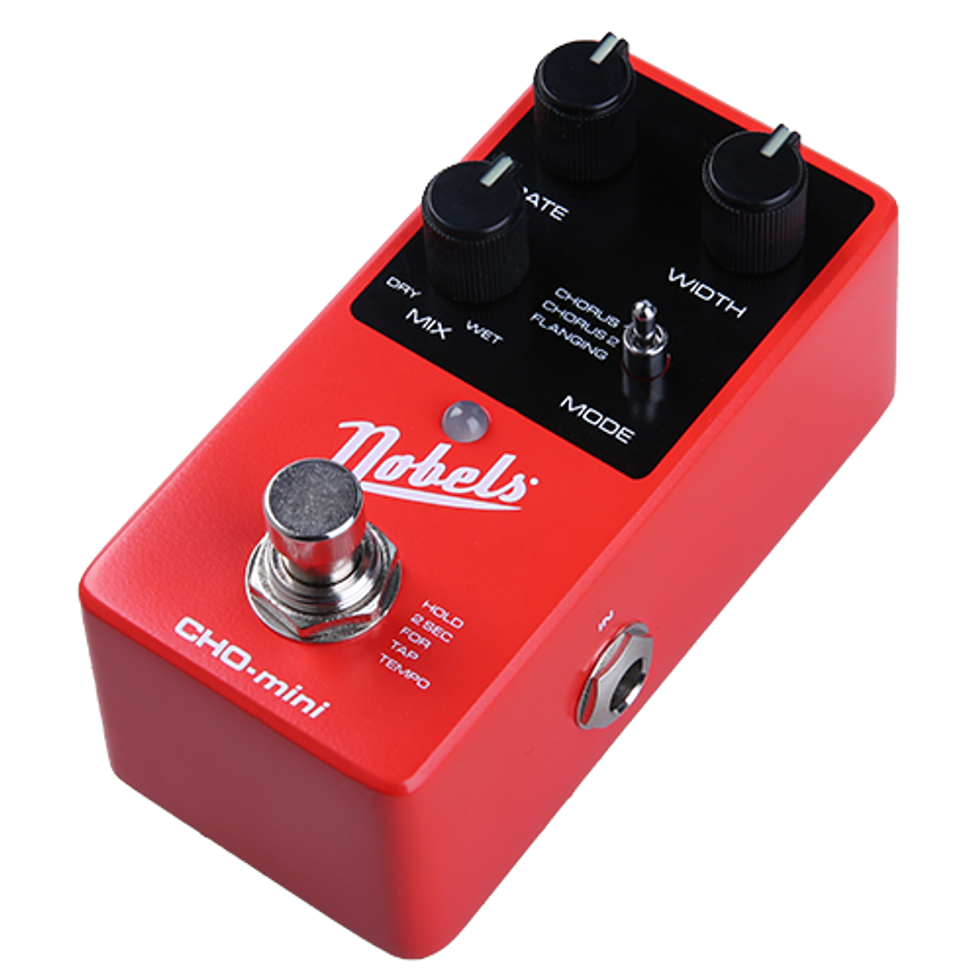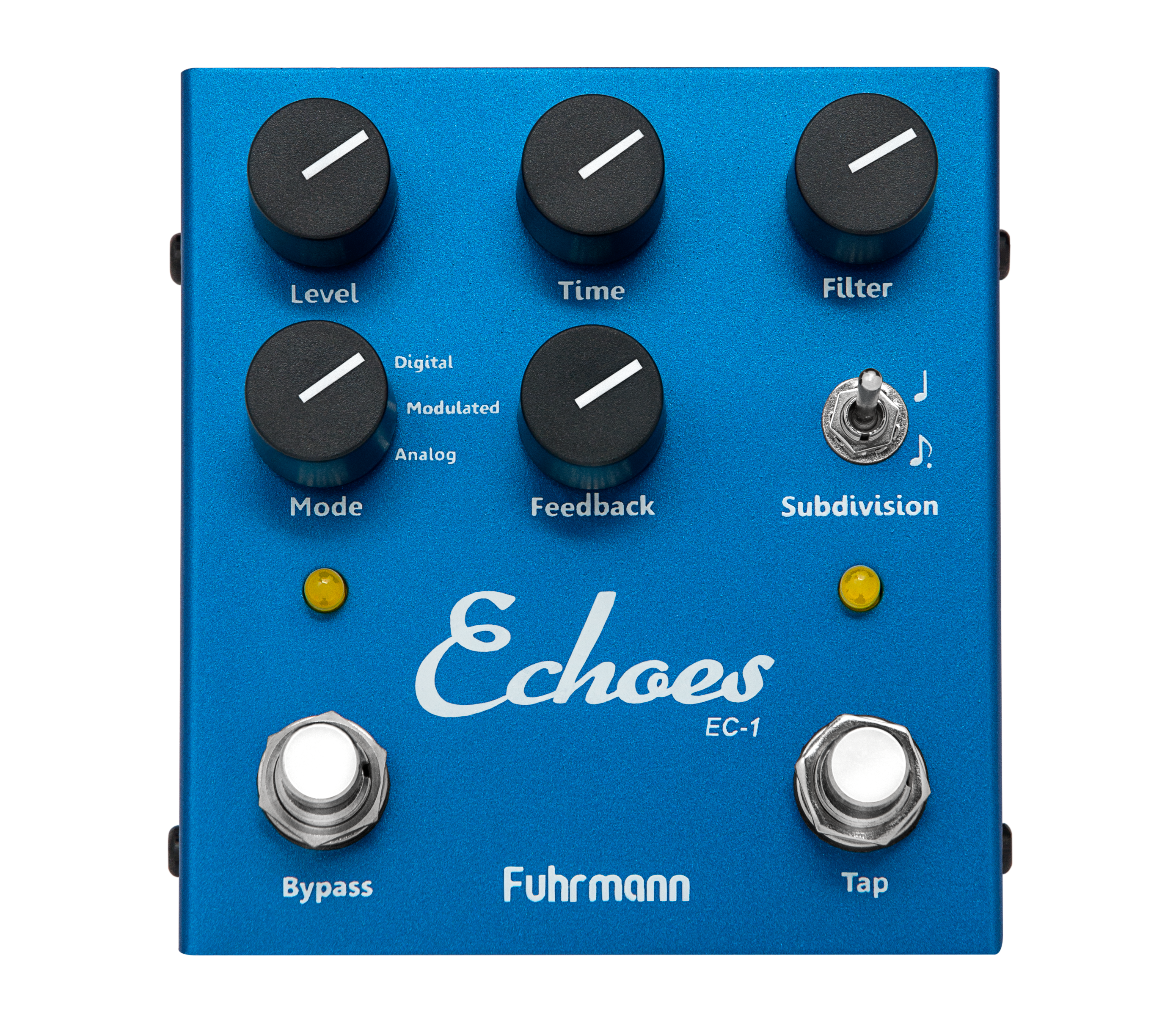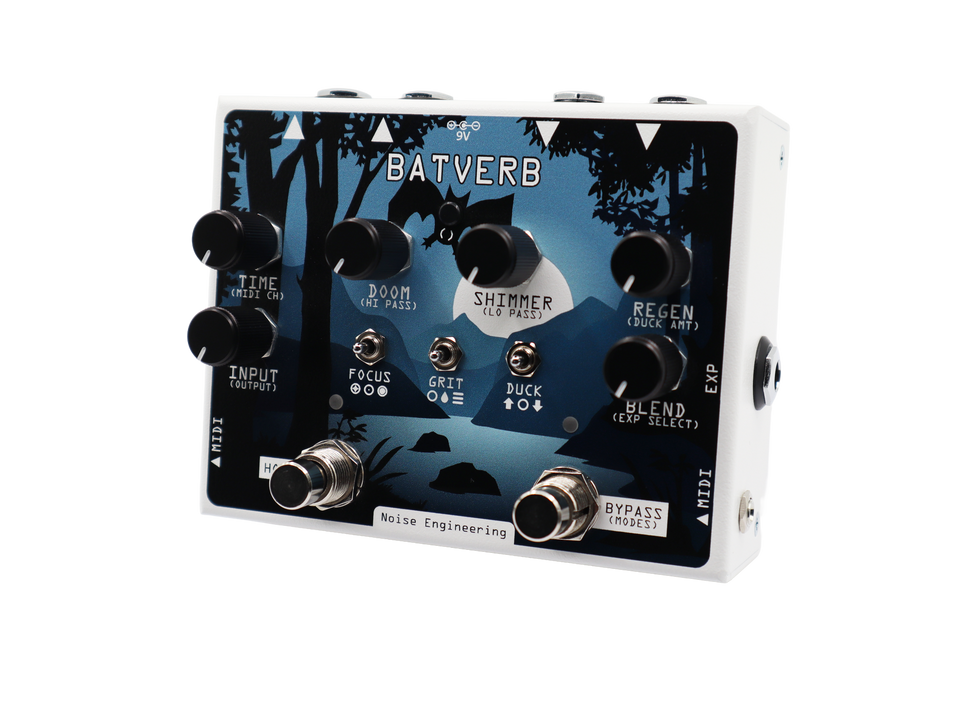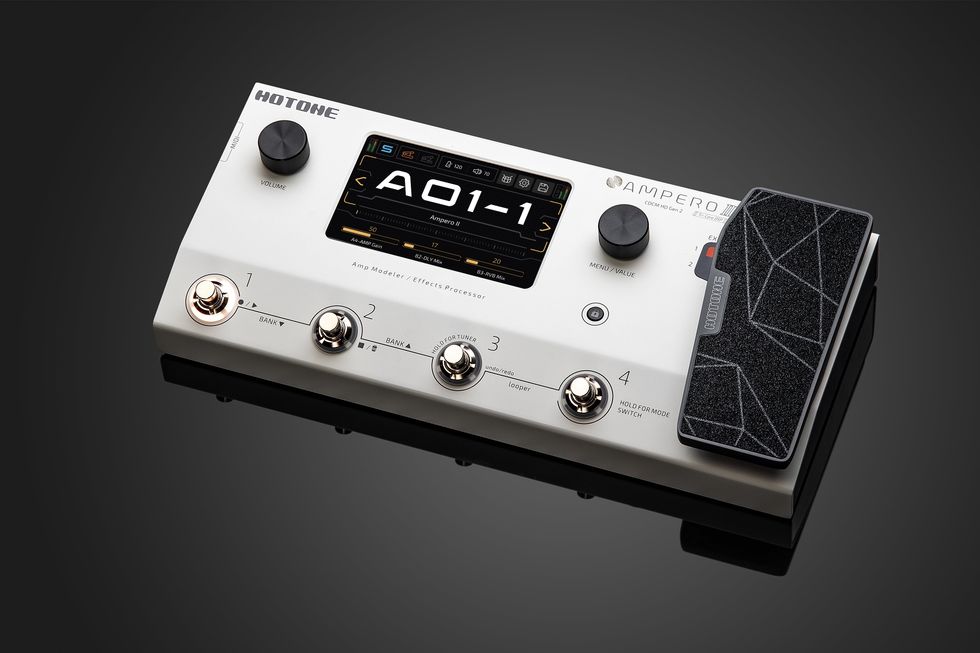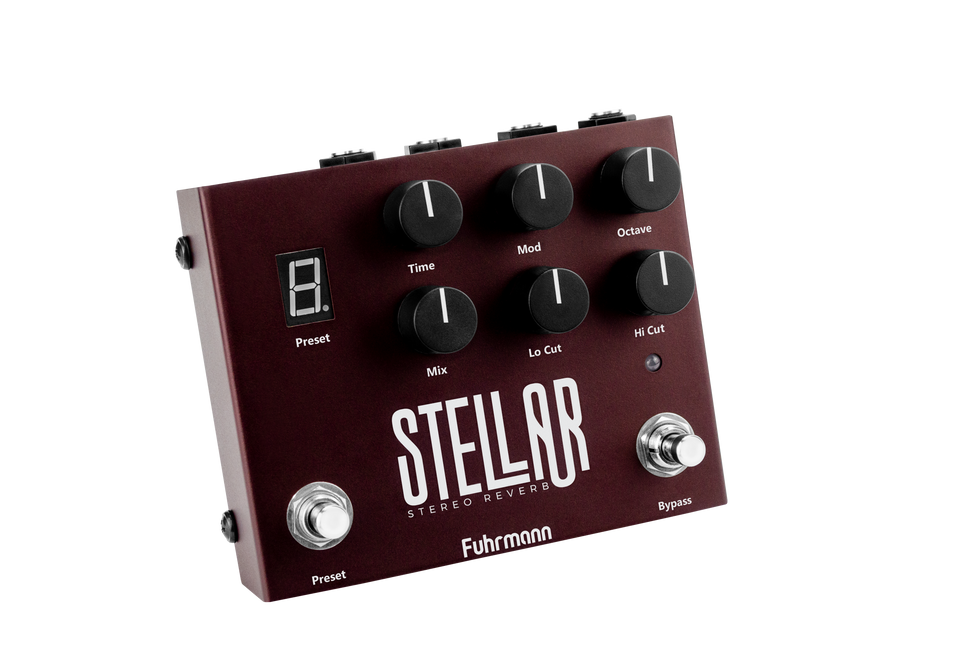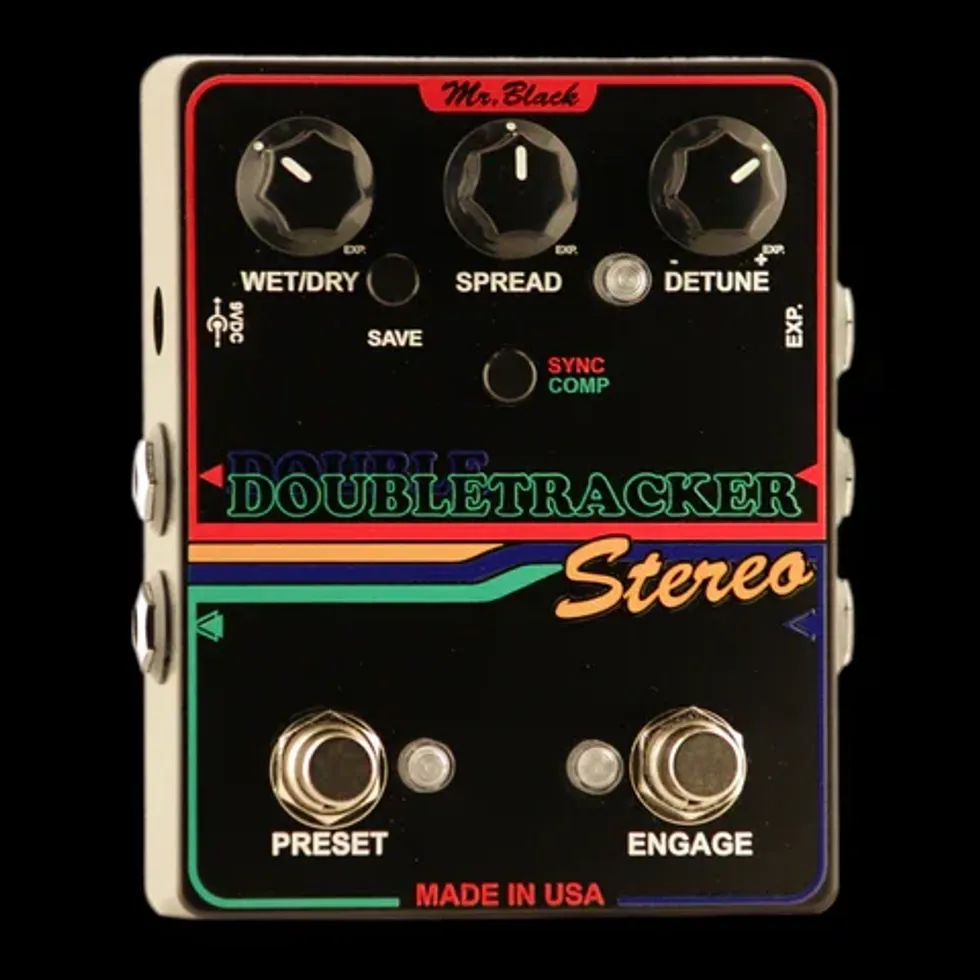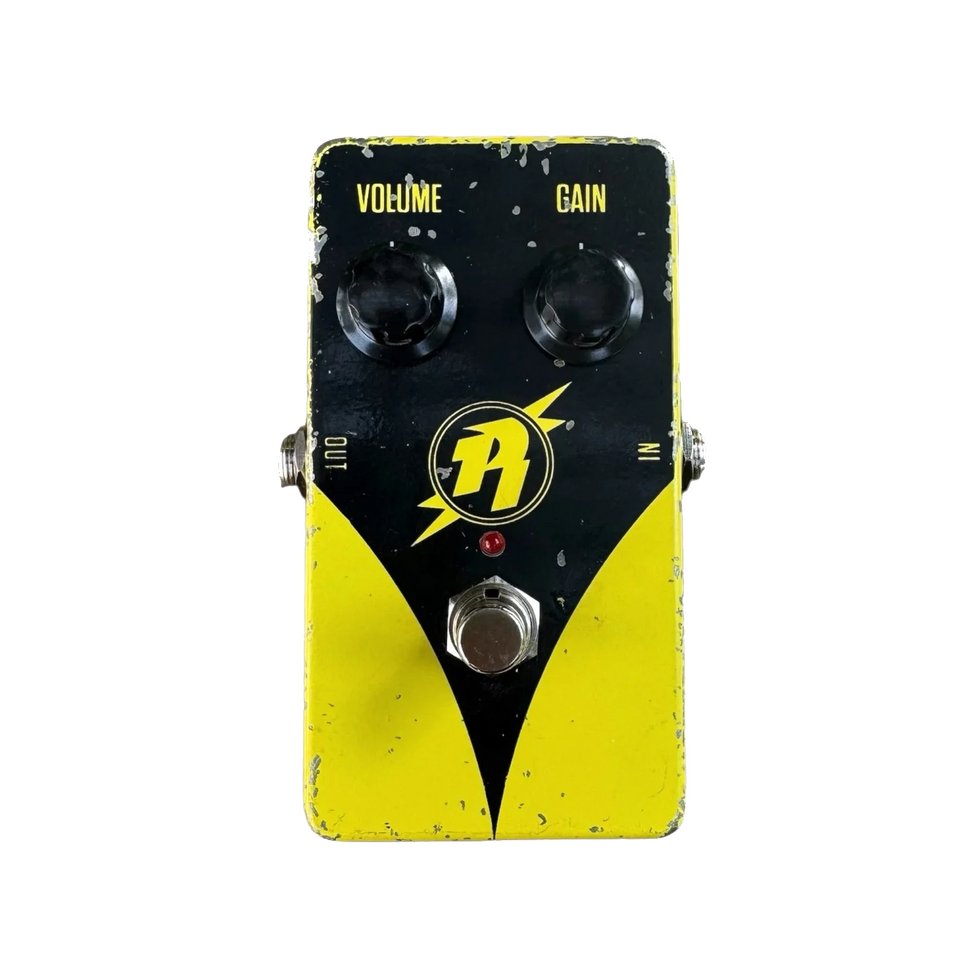The first and perhaps most important thing to know about Riversong’s Glennwood TS6 is that it aspires to hybridize elements of electric and acoustic guitars. This is not a new idea—certainly not in the amplified acoustic era, where the straightest route to eliminating feedback is by reducing the resonant elements that cause feedback in the first place. Some acoustic/electrics achieve these ends by slimming bodies down to electric-guitar thickness. Riversong, however, sticks to traditional acoustic formula by making the TS6 a full-sized instrument. Its dimensions are a little bit atypical: the 16" wide body and 4 3/4" thickness are about the same size as Martin’s “jumbo” J body and the Taylor Grand Pacific. The pretty silhouette also echoes the curvaceousness of those larger guitars. Those similarities sometimes feel like an exception, though. At nearly every other turn, the TS6 very happily breaks the acoustic design mold.
A Nuts-and-Bolts Approach
You don’t have to look very hard or be an acoustic guitar construction expert to see that there is a strong deconstructive thread in the Riversong’s design. The gap in the top behind the bridge, the slim heel, and, above all, the bracing and neck-through build are major breaks from classic acoustic design philosophy. These very overt differences are also a clue to how the Riversong stretches the definition of what an acoustic guitar is.
Most tradition-minded acoustic builders would consider the small space aft of the bridge detrimental to a resonant top. And few would opt for the bolt-on neck and through-body re-enforcement that runs the length of the body. These obvious deviations from acoustic design dogma are just the start. Peek through the side port and you’ll see “skeletized” bracing that looks like sections of a cantilever bridge in miniature. Adjustment to the action and neck tilt? They’re made with an Allen key that you place through an access cavity on the back of the guitar at the heel.
All these very unconventional elements are executed at a very high level of workmanship. I failed to find a construction miscue anywhere. The fretwork is pretty much perfect and the solid wild cherry back and sides, Sitka spruce top, maple neck, and walnut fretboard are all shaped and put together with obvious care.
Electrified Vibrations
Considering that the TS6’s primary mission is that of a hybrid electric/acoustic—and that so many of its fundamental design elements would traditionally be considered detriments to acoustic tone—the TS6 sounds pretty good unplugged. If I had to guess, I’d venture that the Jumbo-like dimensions were adopted, in part, to offset the diminished volume and overtones that could result from the neck-through design. Yet the TS6 is notably resonant, particularly in the low-midrange, and exhibits nice sustain. It may not be as loud or detailed as a dedicated acoustic of similar dimensions, but it holds its own, and the combination of projection from the side port and soundhole creates a nice composite sound image that would be well worth miking and doubling with the pickup signal in a studio or on a quiet stage.
The combination of projection from the side port and soundhole creates a nice composite sound image that would be well worth miking and doubling with the pickup signal in a studio.
The TS6’s amplified qualities and its electric-like playability are the main attraction, though. The Fishman Flex undersaddle pickup and preamp hold up pretty well to hard strumming without getting quacky, but the guitar and pickup work best together in dynamic fingerstyle settings. I tended to work from fairly tame tone settings on both the TS6 and the Fishman Loudbox I used for amplification, but the TS6 left ample headroom for adding sparkle to the basically well-rounded tonal foundation. Playability, as advertised, is excellent for a flattop. The 16" fretboard radius and jumbo frets make it easy to fret with a light touch. The 1 5/8" nut width and the neck profile (which to me felt at various times like a 1960s Guild or a Rickenbacker) also conspire to lend a very electric-feeling experience. The neck-thru system’s ability to facilitate and withstand pitch-bending neck wobbles also checks out just as Riversong claims. I can’t remember using an acoustic in this fashion so readily, dramatically, and with such negligible effect on tuning stability.
The Verdict
At around $2,000, the TS6 is a flattop for players committed to the unconventional or performers that can also afford to keep a classic flattop around for recording pure acoustic tones (if they are concerned with such expressions). It’s a niche instrument, but it does a brilliant job of blurring the lines between acoustic and electric.







